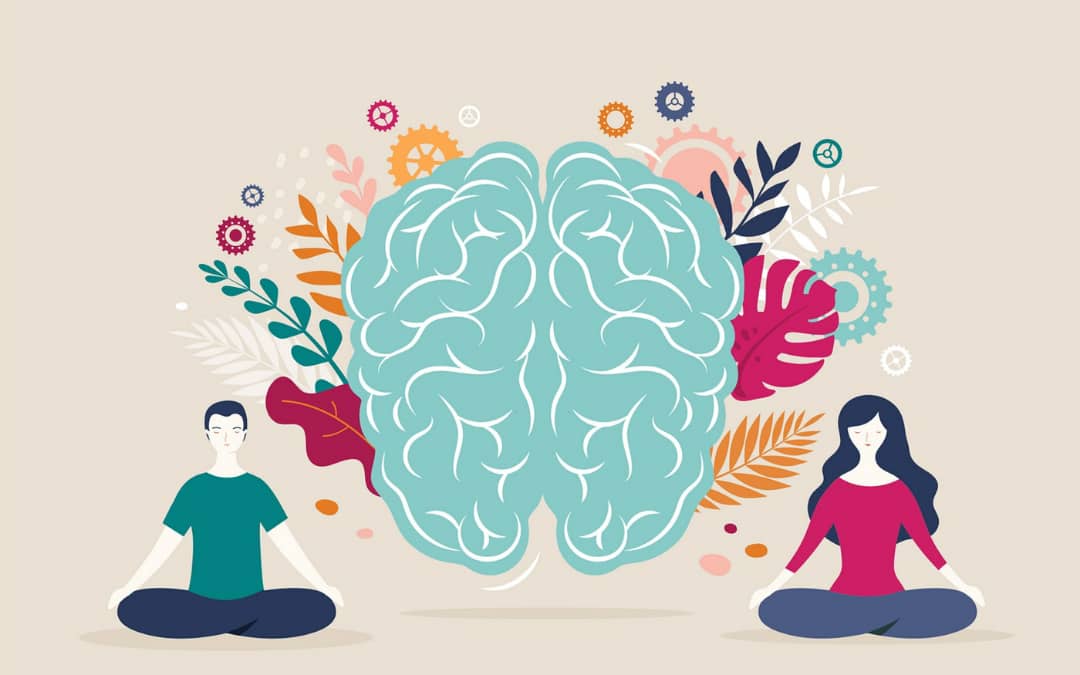Are you mindful? Or is your mind full?
Most of the time, our minds tend to wander: to be out of sync with the present, and either rooted in the past or the future. We spend much of our lives unaware of the significance of our experiences and emotional selves.
Here’s good news: Practicing mindfulness can offer respite from a busy mind, though it takes conscious intention and regular practice. Mindfulness is an approach of purposely paying attention with non-judgement in the present moment. It is a way of perceiving, being attentive, and focusing on your sensations, feelings, thoughts, and environment. Mindfulness has its origins in Buddhist literature; however, the practice is secular—- religion is not needed to practice and benefit from being mindful. For example, we tend to associate meditation as a practice only for Buddhists. However, everybody can practice meditation and it is a powerful tool to cultivate mindfulness!
Here’s the thing: We actually engaged in mindfulness activity in our everyday life (such as mindfulness meditation, and mindfulness eating). Mindfulness can consist of three elements:
- Intention– Knowing why we are practicing mindfulness and understanding our personal vision and motivation
- Attention– Observing the operations of one’s moment to moment, internal and external experience
- Attitude– Qualities one brings to attention and includes a general sense of openness, acceptance, curiosity, and kindness.
Mindfulness can also be developed through listening. However, it is important to note that hearing is not listening, and listening may not be active listening.
It is important to acknowledge that cultivating mindfulness requires time, effort, patience, and self-compassion. By starting to meditate a few minutes a day, it might help to foster a calmer state of consciousness. Here is a step-to-step guide to start practicing meditation:
1.Find a quiet space: Select a peaceful area where interruptions are minimal.
2.Adopt a comfortable posture: Sit in a way that keeps your back straight yet relaxed.
3.Focus on your breath: Gently close your eyes and direct your attention to the rhythm of your breathing.
4.Observe without judgment: As you observe your breath, thoughts are bound to arise. This kind of wandering is natural. When it happens, softly acknowledge this and return your focus to your breath.
5.Be consistent: Try to meditate daily, starting with just a few minutes and gradually increasing the duration.
6.Stay open and curious: As your practice evolves, exploring different meditation techniques can enrich your experience.
Another way to cultivate mindfulness is through mindfulness-based stress reduction (MBSR), an eight-week structured group program that employs mindfulness meditation to alleviate suffering associated with physical, psychosomatic, and psychiatric disorders. In recent years, MBSR has gain prominence, especially when it comes to the topics of mindfulness. MBSR can reduce stress and stress-related symptoms, reduce emotional reactivity whole enhancing emotion regulation ability, reduce sleep disturbances and improve mood, and improve health and quality of life in adults. Mindfulness was linked with the ability to deal with adversity and awareness of one’s emotion. You may look it up for further information about MBSR! (Here’s a link: https://positivepsychology.com/mindfulness-based-stress-reduction-mbsr/)
The benefits of mindfulness go beyond stress relief. Mindfulness improves relationships. For example, parent-child relationship (children also prefer mindful adults). It enhances interpersonal relationships by encouraging non-judgmental views of the other, which include paving a way for perspective taking and empathy. Mindfulness can also put a brake in our tendencies to jump into conclusions. Cultivating mindfulness reduce prejudice, discrimination, and autonomic stereotyping. Like most people, it is difficult to avoid judging or forming impressions of others. When we approach others in the spirit of curiosity, we allow for greater opportunities for deeper and more meaningful connections.
There are plentiful of mindfulness guides, apps, and other tools that can help to get you started on your mindfulness journey. However, mindfulness is not a one-size-fits-all approach to well-being, thus we encourage you to talk to a therapists or professionals about mindfulness-based treatment options.


